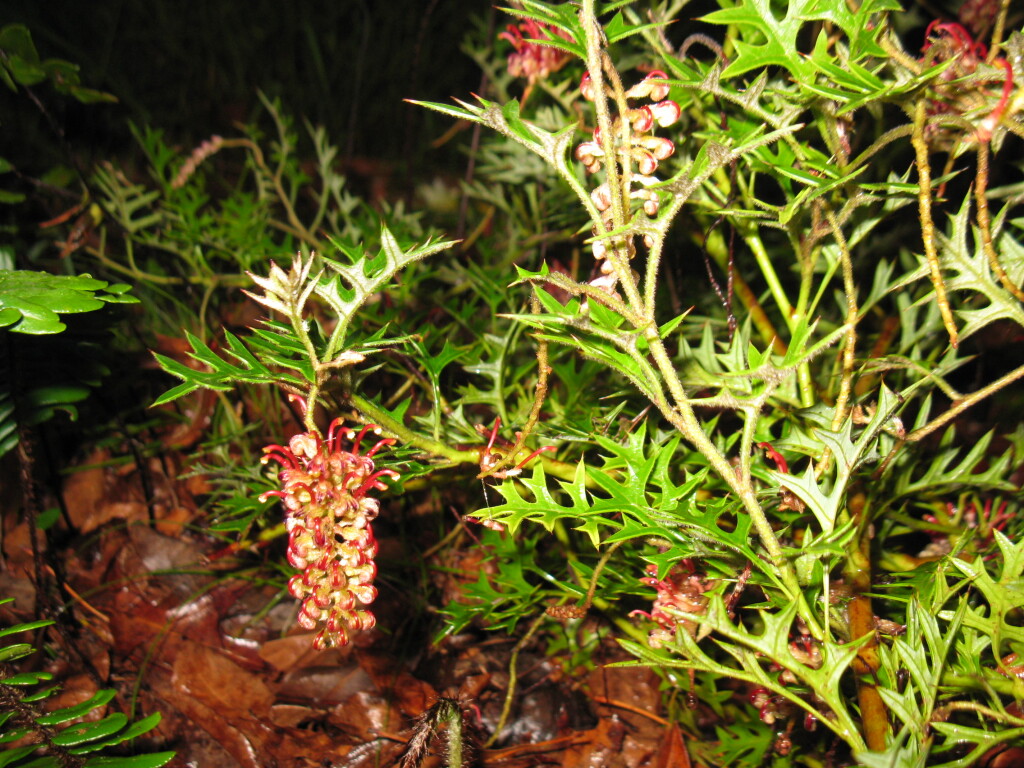Grevillea microstegia
Molyneux Mt Cassell GrevilleaProstrate to procumbent or straggling shrub, 0.3–1 m high. Branchlet indumentum sparse villous to glabrescent. Leaves deeply and regularly pinnatisect, 2–6 cm long, 1.5–5 cm wide; primary lobes 5–13, 0.5–2.5 cm long, 3–7 mm wide, simple or usually 2–5-fid or -dentate, sometimes with some tertiary toothing; ultimate lobes triangular; lower surface sparsely tomentose or occasionally glabrous; margin recurved. Conflorescences terminal, erect, simple, secund, 3.5–5 cm long; peduncles 5–15 mm long, 0.8–1 mm wide; rachises tomentose; perianth reddish-brown, outer surface tomentose to subsericeous, inner surface glabrous; pistil 13.5–15 mm long, ovary stipitate, subvillous; style red with yellow tip, glabrous, pollen presenter oblique. Fruits subsericeous to open-subvillous, with red-brown markings. Flowers ?Oct.–Dec.
Wim, GGr. Restricted to the Mt William Range area of the Grampians, particularly on and around Mt Cassell. Grows in open-forest and scrub, in sandy or rocky soil on sandstone.
Grevillea microstegia is most similar to G. aquifolium, G. dryophylla and G. montis-cole. Grevillea aquifolium has a longer pistil (21–26 mm long). Grevillea dryophylla has broader primary leaf lobes (0.5–2 cm wide) and shorter secondary lobes (scarcely measurable), usually a shorter peduncle (< 1.5 cm long) and shorter conflorescences (1–4 cm long). Grevillea montis-cole has broad triangular leaf lobes, floral bracts 2–4.5 mm long, and also usually longer pedicels 1.5–4.5 mm long.
Makinson, R.O. (1996). Grevillea. In: Walsh, N.G.; Entwisle, T.J., Flora of Victoria Vol. 3, Dicotyledons Winteraceae to Myrtaceae, pp. 845–870. Inkata Press, Melbourne.
 Spinning
SpinningOlde, P.; Marriott, N. (1995). The Grevillea Book. Kangaroo Press, Kenhurst, NSW, Australia.

